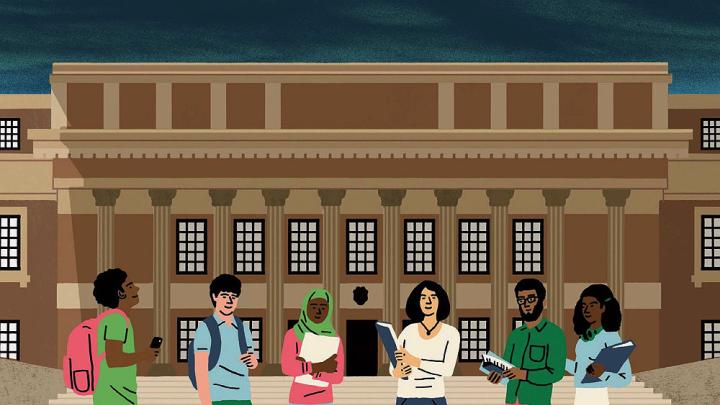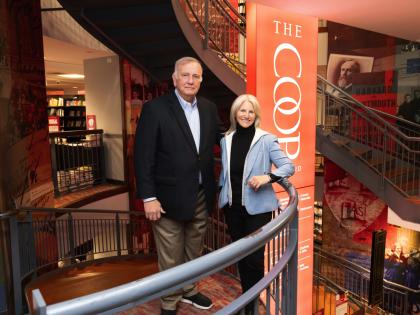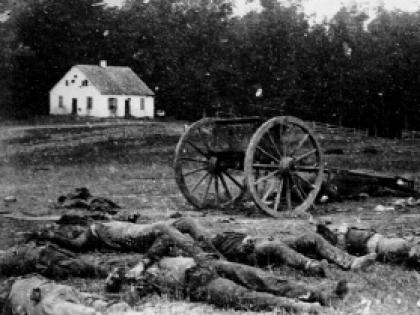The harry elkins widener Memorial Library houses 3.5 million books and 400 million documents in its cavernous limestone chambers. It is the largest university repository of books and manuscripts in the world, and it sits in the middle of Harvard Yard, where it serves as the sweeping backdrop for thousands of starry-eyed tourist Instagrams and glossy brochure photos. Widener functions synecdochally, a grand, imposing metaphor for one of the most powerful brands in the world. It is the centerpiece of the University, the axis around which Harvard grinds and whirs, churning out computational problem sets, completed bleary-eyed at 3 a.m., or scribbled annotations on the Frankfurt School, piled on top of secluded carrels: dog-eared relics that’ll remind us, when we’ve made it, that once we doubted we could.
For the past three years, I’ve avoided it. Its magnificence recalls an old Harvard, a centuries-old eliteness that, until recent years, didn’t accommodate individuals like me. Walking by, you see crowds of excited Asian tourists peering inside—and although I know my public-radio tote bag, white Birkenstocks, philosophy books, and Harvard ID will allow me to float through the entrance freely, the wry symbolism feels heavy at a time when Harvard is being sued for supposedly anti-Asian admissions policies. But at the beginning of this school year I found myself walking there with a lanky Leverett junior named Ben, trailed by 10 wide-eyed first-years who chattered animatedly about whether to take Economics 10. Together Ben and I led our kids up the staircase of Widener, past the murals painted by John Singer Sargent, into the Loker Reading Room. There, the new University president, Larry Bacow, and the dean of the College, Rakesh Khurana, welcomed our kids, the inaugural class of FYRE, to Harvard.
The First Year Retreat and Experience, or FYRE, is a two-year pilot, a pre-orientation program designed to help students from “historically marginalized communities” transition to Harvard. It caters mainly to first-generation and low-income students, assisting them as they navigate the dizzying array of acronyms on campus: BCS, OIE, OCS, CAMHS, FAO. There are icebreakers and academic panels, hip-hop yoga and silent discos. All of the slippery, intangible “skills” that Harvard’s upper-middle-class majority takes for granted, which its members believe makes them uniquely deserving of success, are covered: how to cold-email professors, request a tutor, or seek mental-health care. As are the struggles that the majority doesn’t seem to face. Students ask how to get along with roommates whose Canada Goose jackets may cost more than their own entire financial contribution toward attending the College, or how to grapple with “survivor’s guilt,” like how to eat full meals in the dining halls knowing that their families back home don’t have food.
FYRE is the result of years of concentrated activism by first-gen students. Blueprinting for a pre-orientation program began when Primus (originally the First Generation Student Union, FGSU) was founded in 2013. Two years later, Savannah N. Fritz ’17 faced “resistance” from Dean Khurana, as she told The Harvard Crimson, when she proposed an eight-day “Freshman Enrichment Program” that she developed with the help of a $3,000 planning grant from the Undergraduate Council. But the efforts and rejections continued: last year, Khurana and the administration were the subject of widespread anger (harvardmag.com/firstgen-17) when they rejected another bridge program for first-gen and low-income students—a “First Year Institute” proposed by Katie Steele, then of the Freshman Dean’s Office (now senior director for student engagement and leadership in the Dean of Students’ Office), and modeled on Fritz’s initial proposal.
But finally, after months of exhaustion and unpaid labor by student advocates, a program materialized—and was recorded by the Harvard Gazette photographers hovering around our first-years as they unwrapped new books that had been recommended personally for them by professors. On stage, President Bacow slipped a FYRE T-shirt over his button-down. Watching my first-years at Widener, enraptured by this display—the motivating speeches by Dean Khurana outlining the mission of the College, before they’d become a trite punchline—I remembered what it was like standing on the steps of Widener during my Freshman Convocation, intoxicated by the potential of my whole life ahead of me.
But after the kids shuffled back to Wigglesworth to sleep or share a few late-night revelations with friends, I began to worry I was selling my kids a dream of Harvard it could not live up to. A few days later, I saw my FYRE family featured in the Gazette, front and center on the page—the face of the diversity statistics, the face of thousands of high-school students’ wildest dreams.
“Harvard belongs to you,” Khurana had told us. In the moment, we believed him.
Lately, we’ve all been thinking about who Harvard should belong to. A lawsuit against the University alleging discrimination against Asian-American applicants has produced bruising details about the College’s confidential admissions process, and forced many of us to reckon with our place here.
Harvard is a college where a visit from Colin Kaepernick or the Secretary of Energy is just another event you blow off for a problem set; where your journalism professor is the former managing editor of The New York Times; and where your section mate is an Obama or a Kennedy. To be one of the 5 percent of applicants admitted to Harvard is to be catapulted automatically into the elite. To say that all of this is deservedly ours because of the choices we made before we turned 18—no one, not even the international-science-fair champions, can prove that with certainty.
In high school I was one of those self-righteous students who derived significant esteem from not being like the other Asians: for having white friends who’d drive me into Dallas, to the Deep Ellum entertainment district, for live jazz and spoken-word poetry; for writing songs as my assignments; for caring about local elections and municipal policy. I liked to insert myself into conversations I didn’t belong to, an outspokenness my teachers interpreted as showing independent thinking and bravery. “Asianness” was so tightly circumscribed in the suburbs of Dallas that the only way I knew how to be my own person was to disavow the whole. So I railed against the never-ending race of skipping math levels that placed seventh graders in pre-calculus, and the SAT prep centers that constituted their own industry. There were 1,556 seniors in my graduating class and I wanted to be an individual.
I received my acceptance letter from Harvard in March, despite an SAT score below 2300 and several Bs, not to mention dozens of high-school classmates more disciplined than I. At the time, it was evident to me that I deserved it. Harvard wanted personality, and from the warm, chipper note my admissions officer wrote to me praising my activism, I undeniably had it. Anyone who wonders whether they should be here gets reassured that the masterminds in the admissions office don’t make mistakes—they can detect hidden potential; they can whiff out inauthenticity. For most of my time in Cambridge, I believed in Harvard’s infallibility.
Freshman year was magical, a dazzling rotation of things I had never encountered. In high school I knew only one gay classmate, but at Harvard all of my male friends had their nails painted and preferred the term “queer.” We hung out in large groups, sharing greasy scallion pancakes on a comically large plush beanbag, and screamed along to Carly Rae Jepsen’s EMOTION. I took the T into Chinatown for soup dumplings with a former circus performer who loved European languages, and scream-whispered Paramore lyrics in Lamont with kids in the punk division of the college radio station. Diversity, the backbone of the University, for me was no longer a suburban dream.
Until this year, Harvard made it easy for me to avoid reckoning with the most difficult parts of my identity. In my hometown, Asian boys would make fried-chicken jokes and complain that they’d automatically be admitted to the Ivy League if they were black: this always struck me as not only offensive but unthinking, as if blackness is merely a veil that can be disposed of when it has exceeded its utility. In college, the people around me were unlikely to make these mistakes. The majority of my close friends were multiracial—half black, one-eighth Hawaiian, all somewhere on the spectrum of “progressive”—and thus unlikely also to see this close-minded view of “Asianness” as constituting me. Even as I’ve begun to realize, since freshman year, how much diversity at Harvard can be cosmetic, I still look around the room at parties, where my black roommate is getting sloppy to Katy Perry in a velvet top they borrowed from me, and feel sentimental about the realization, albeit temporary, of my post-racial dreams.
The brutal reality is that I still derive most of my esteem from being “not like the other Asians.” Only now, the “other” Asians are not in my classroom solving calculus problems faster than me. They’re the ones outside of the red-brick confines of Harvard, arguing for a race-blind vision of equality. The Asian Americans supporting Students for Fair Admissions view equality as entitlement to the privileges, the fullness, of whiteness—there’s so much about the lawsuit that feels selfish. But it’s easy to criticize when—as a Harvard senior—this fullness has already been afforded to me.
One of the first lectures I attended at Harvard was the introduction to “Money, Markets, and Morals,” an Ethical Reasoning general-education course taught by Bass professor of government Michael Sandel. As the University’s reigning moral philosopher, Sandel has been instrumental to projecting the image of a progressive, socially enlightened Harvard into the online stratosphere. His course “Justice” was the first Harvard course made publicly available for millions online. Standing in front of hundreds of eager undergraduates, Sandel posed a question: how would we feel if 10 percent of the seats at Harvard were reserved for the children of wealthy donors? The majority of us sitting in Sanders Theatre were aghast. Did that not undermine the foundation of meritocracy, the idea that we got here because we deserved it?
But it turns out the question wasn’t really hypothetical. Internal documents released during the admissions trial illuminated special privileges for applicants related to wealthy donors, who are often placed on a confidential “Dean’s Interest List” or “Director’s Interest List” that has an acceptance rate of 42.2 percent—eight times the regular admissions rate. More than 10 percent of my class of 2019 are members of the special lists. But this fact does not seem so egregious when you consider Harvard has always skewed wealthy. Two-thirds of Harvard students, myself included, come from families in the top 20 percent of the income distribution. The median household income of Harvard undergraduates is three times the national average. Even then, the sheer wealth and elitism present at Harvard can be so suffocating that even those normally considered privileged feel excluded. I identify as neither first-gen nor low-income, but I applied to team-lead for FYRE because I was tired of the exclusionary culture of the arts community. My public high school didn’t have much arts programming, which made me feel constantly behind during my first two years in Cambridge. I wanted to help other people who didn’t go to private school or performing arts academies to be able find their voices in creative writing or comedy also.
Slowly, after my first year, I learned about the corners of the University where I didn’t belong. There was that dystopian night I’d spent at a final club, watching silently as broad-shouldered men slipped their arms around girls and disappeared to places where the regular guests were forbidden. Rowdy partygoers gyrated to Kendrick Lamar’s “Alright” on wooden tables and popped yet another bottle of champagne. I had a hard time remembering I was in my own body. Within 20 minutes, I had slipped out the door.
An upperclassman I knew was a member of The Harvard Advocate had been there, flirting with me. “Isn’t it such a strange experience being in final clubs as Asian people?” I asked him later, walking with my friends down Mount Auburn Street toward late-night pizza, past the party. He agreed: “So different from the world I grew up in.”
We were almost at Pinocchio’s when I reminded him. “You went to Exeter.”
“The mission of Harvard College,” as Dean Khurana likes to remind us, “is to educate the citizens and citizen-leaders for our society.” On social media, the College features activists with cystic fibrosis, global nonprofit founders, and recent graduates teaching in underserved communities. In speeches, Khurana emphasizes that Harvard has more Medal of Honor recipients than any other institution of higher education except the U.S. military academies. The 5 percent of applicants accepted by Harvard are supposed to steer the globe toward a better future, hence the need for moral signaling. The University’s prestige, not to mention the justification for its exclusivity, depend in part on its ability to keep people believing.
It’s often said that Harvard’s acceptance of wealthy students provides greater opportunities for its low-income students. But the presence of low-income students protects opportunity for the wealthy, too. I remember Savannah Fritz’s righteous anger when the First Year Institute was denied: “Dean Khurana, you brought us here. You flaunt us in your diversity statistics.”
“Diversity,” as I’ve come to understand it, is the apparatus which sustains the preservation of the elite. It keeps us believing that the system is fair and that we’re here because we earned it. The past few months I’ve grown uneasy knowing that the bargain that students of color at Harvard must make to protect affirmative action is to pretend that “diversity” has always been a top University priority. After half a century of student activism, Harvard still doesn’t have a multicultural center. FYRE’s undergraduate co-chairs had to request compensation for the hundreds of hours they spent organizing it. Change often comes at a cost to student activists who help make it. A Crimson feature published after the release of the College’s Working Group on Diversity and Inclusion report in 2016 understated a grim reality: “Here, change doesn’t happen overnight.”
“Harvard belongs to you,” Khurana had said. I’m reminded of the disconnect between the Harvard I envisioned, standing for the first time on the steps of Widener, and the Harvard I know now in its flawed actuality. That belonging is not only a privilege, but an extraordinary responsibility.








